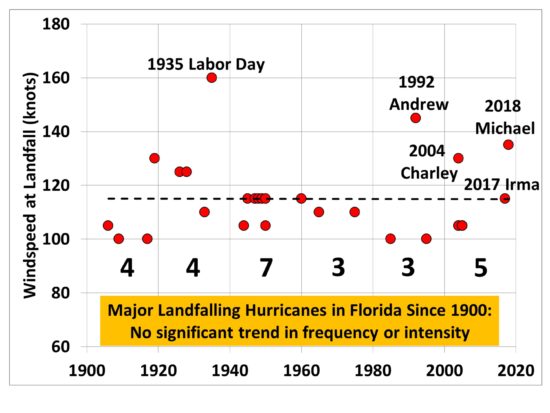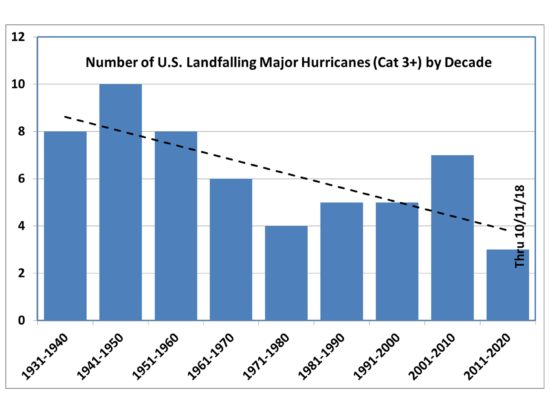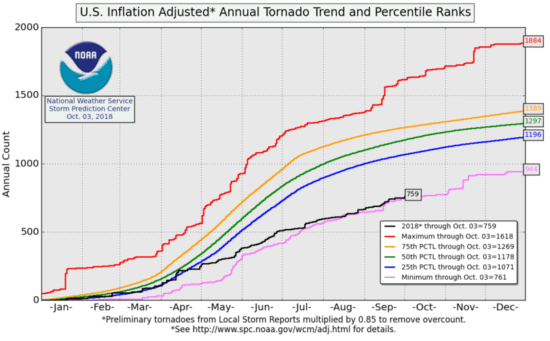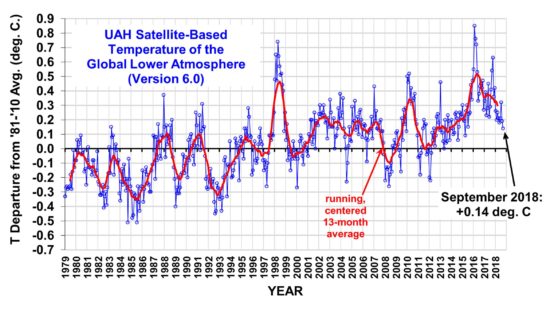Note: The first plot had Michael’s wind speed plotted incorrectly, which has been fixed.
I’ve updated a plot of Florida major hurricane strikes since 1900 with Hurricane Michael, and the result is that there is still no trend in either intensity or frequency of strikes over the last 118 years:
This is based upon National Hurricane Center data. The trend line in intensity is flat, and the trend line in number of storms (not shown) is insignificantly downward.
Nevertheless, the usual fearmongers are claiming Hurricane Michael is somehow tied to climate change.
After all, the Gulf of Mexico is unusually warm, right?
Yes, but if you look at the history of Jul-Aug-Sept average sea surface temperature (SST) anomalies over the eastern Gulf (available here, 25N-30N, 80W-90W), you will see that since 1860, this summer is only the 9th warmest in the eastern Gulf of Mexico.
Even more astounding is that out of the top 10 warmest Gulf years since 1860, 7 occurred before 1970, which is before we experienced any significant warming.
So, all the “experts” can do is make vague claims about how major hurricanes like Michael are what we can expect more of in a warming world, but the data show that – so far at least – the data do not support the theory.
Major hurricanes are part of nature. As evidence of this, I will also remind people of the study of lake bottom sediments in Western Lake in the Florida panhandle, not far from where Michael made landfall, that showed the last 1,000 years have been relatively quiet for Category 4 to 5 hurricanes, but the period from 1,000 to 3,400 years ago was a “hyperactive” period for intense landfalls at that location.
Hurricane strikes in the U.S. are notoriously variable, as evidenced by the recent (and unprecedented) 11+ year “drought” in major hurricane landfalls, which was finally broken in 2017.
Where were the claims that the hurricane drought was due to global warming?
Crickets.
Attributing the latest hurricane in any way to global warming is the ultimate in cherry-picking the data. In fact, they don’t even show the data.
Which brings us back to those vague claims by the experts.
UPDATE:
I also included Michael in the count of ALL U.S. landfalling major hurricanes, again from NHC data. The marked downward trend since the 1930s, 40s, and 50s is quite evident:
Where is the news story about THAT?
More crickets.

 Home/Blog
Home/Blog







